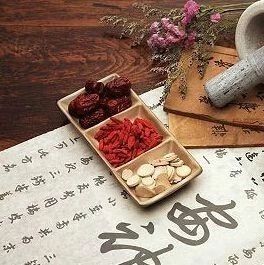Hello everyone, I am Bao Yanju. Today I will share with you the characteristics of the slippery pulse among the eight major pulse types.
Characteristics: The slippery pulse (hua mai) is smooth and flowing, resembling beads rolling smoothly.
The pulse pattern is characterized by a smooth and rounded shape, akin to beads rolling fluidly from the wrist to the fingertips, and can be felt at the superficial, middle, and deep levels.
The slippery pulse is often associated with heat, particularly Yangming heat; if the pulse is weak upon heavy pressure, it may indicate spleen and stomach deficiency, which can lead to cold-damp or phlegm-damp accumulation. Patients often experience fullness in the stomach area, and the syndrome typically presents as a pattern of upper heat and lower cold. Clinically, Ban Xia (Pinellia), Sheng Jiang (Fresh Ginger), and Gan Cao (Licorice) in the Xie Xin Tang (Drain the Heart Decoction) are commonly used with modifications.
Chai Hu Gui Zhi Gan Jiang Tang (Bupleurum and Cinnamon Twig Decoction) can also treat the upper heat and lower cold syndrome, but this upper heat is often due to Shaoyang heat, where the pulse may present as wiry. In contrast, the upper heat in the syndrome treated by the three Xie Xin Tangs is typically Yangming heat, where the pulse is more likely to be slippery. Therefore, when distinguishing between Shaoyang heat and Yangming heat, the pulse characteristics of wiry or slippery can often provide guidance.
A slippery pulse with weak pressure is also commonly seen in patients recovering from high fever due to external pathogens or those who have sweated excessively from an external illness. A slippery pulse indicates internal heat, while weak pressure suggests post-external pathogen spleen and stomach deficiency, leading to impaired fluid transformation and accumulation of water-damp. This combination of damp and heat in the middle jiao can result in persistent low fever, reduced appetite, fullness in the stomach area, and fatigue. Bamboo Leaf and Gypsum Decoction can be used to clear heat and replenish the deficiency of the spleen and stomach.
As stated in the Shang Han Lun (Treatise on Cold Damage), Section 397: “After recovery from cold damage, if the patient is weak, has little energy, and experiences reversed qi wanting to vomit, Bamboo Leaf and Gypsum Decoction is the main treatment.”
Deep pulses indicate internal conditions, while slippery pulses indicate heat. The combination of water and heat can lead to damp-heat syndrome, thus a deep and slippery pulse often suggests damp-heat descending. Symptoms such as heaviness and swelling in the legs due to damp-heat can be treated with Si Miao San (Four Marvels Powder) with modifications. If the patient also presents with fullness in the stomach area, reduced appetite, and symptoms of the lower jiao such as abdominal distension and loose stools, along with upper heat symptoms like dry mouth and thirst, Chai Hu Gui Zhi Gan Jiang Tang combined with Si Miao San can be used.
If the patient has loose stools, is sensitive to coolness in the stomach, and experiences diarrhea from consuming cold drinks or fruits, Fu Zi Li Zhong Tang combined with Si Miao San can be applied.
When damp-heat descends primarily in the lower jiao, in addition to heaviness, swelling, and fatigue in the legs, there are often urinary issues including frequent urination, urgency, painful urination, and burning sensations. Zhu Ling Tang can be used, commonly seen in conditions such as prostatitis, pyelonephritis, cystitis, urinary tract infections, and urinary stones.
During a normal menstrual period, the pulse is typically a slippery and wiry pulse. If a patient usually has a strong slippery and wiry pulse, they likely have internal heat, as heat forces blood flow, often leading to early menstruation, intermenstrual bleeding, or uterine bleeding. In such cases, it is not sufficient to merely stop the bleeding; heat must also be cleared. If the patient frequently experiences early menstruation or continuous spotting, with a red tongue and thin or scanty coating, and a strong slippery and wiry pulse, it is often a case of heat with blood stasis. Jiao Ai Si Wu Tang (Mugwort and Four Substance Decoction) with Sheng Shi Gao (Gypsum) can be used for treatment.
If the patient has a deep, thin, and slippery pulse, with excessive vaginal discharge, a pale red tongue, and a white greasy or thin yellow greasy coating, it often indicates blood deficiency with blood stasis and dampness, which can be treated with Dang Gui Shao Yao San (Angelica and Peony Powder) with modifications.
If the patient’s pulse shows a slight wiry quality, it often indicates qi stagnation, which can be treated with Si Ni San (Frigid Extremities Powder) or Xiao Yao San (Free and Easy Wanderer Powder).
This concludes the overview of the slippery pulse. The differentiation of the slippery pulse also involves mixed pulses, where overall differentiation is key. By assessing the pulse, we can determine the patient’s symptoms and provide appropriate prescriptions.
Alright, that’s all for today. Thank you, everyone.

